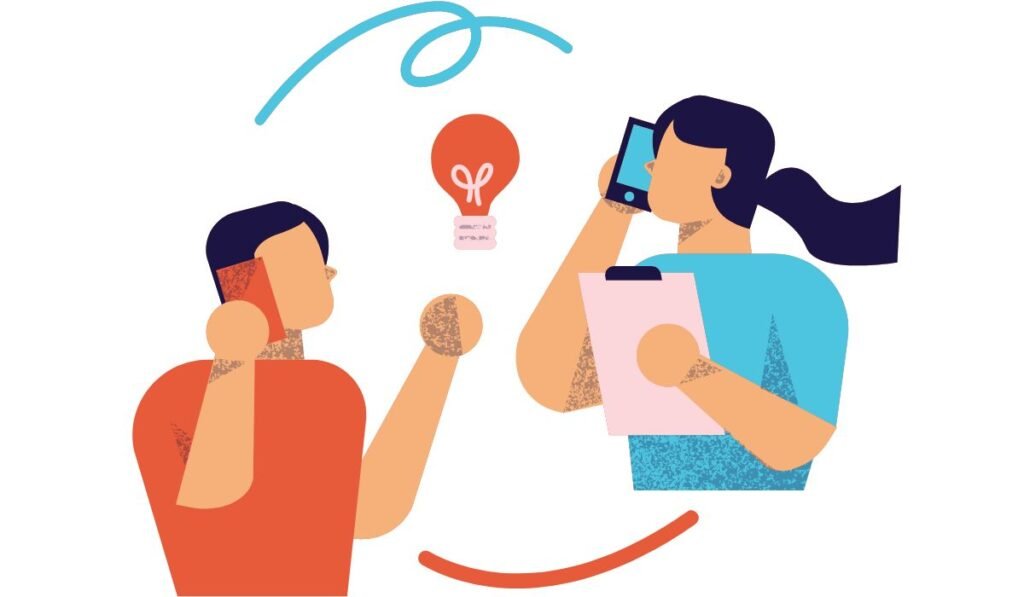Turning first-time clients into long-term partners is a delicate art that goes beyond delivering a great product or service. It’s about creating an unforgettable experience that fosters trust, loyalty, and a deep connection. In this guide, we’ll explore innovative strategies for building long-term client relationships that ensure your first-time clients become lifelong partners in your business journey.

The Power of a Memorable First Encounter
- Start with Authentic Engagement
First impressions aren’t just about professionalism—they’re about authenticity. As detailed by HubSpot, starting with authentic engagement helps establish a solid foundation. When onboarding a new client, focus on understanding their unique needs. Do not limit the conversations to simple exchanges. Be genuinely interested in their business objectives and concerns, and what success means to them. This way, you not only provide a definite service but open the possibility of building a long-term relationship with the clients from the initial moment. For more strategies on client acquisition, check out our Tips for Beginners to Secure Clients.
- Set Expectations Early
Clear communication is key. Set realistic expectations regarding timelines, deliverables, and potential outcomes. Transparency at this stage helps to increase trust which eliminates chances of miscommunication. If the client feels informed then they will consider you a credible partner to do business with, thus making it easy to form a long-term customer relationship.
Beyond the Sale: Nurturing Relationships
- Provide Unexpected Value
After the first project, while coming up with another project, you should surprise your clients with more information concerning them or other tools that would suit them. For example, a free audit of their existing processes or a specialized report regarding trends in their respective industry. This not only increases value but also directly concerns the problem of how to create long-term loyalty relationships with your customers.
- Regular Check-Ins, Not Just Sales Calls
Stay in touch with customers regularly without always attempting to sell them something more. Instead, check-in to ask how their business is doing and occasionally provide them with guidance or materials at no cost. These practices are core elements of successful retention marketing communication, ensuring that the engagement remains strong and that you become the go-to partner when the next need arises. For additional tips on maintaining client relationships, explore our article on Mastering the Art of Client Retention.
Turning Feedback into a Foundation for Growth
- Actively Seek Constructive Feedback
Let your clients give their opinions after the first project that you complete together. But don’t just ask for it—show them that you’re listening by applying their suggestions. This not only enhances your service but also makes the client feel that they are important in your business and that they are part of it, which is key to building long-term client relationships.
Forbes advises that actively seeking and acting on client feedback demonstrates your dedication to their satisfaction and fosters a deeper connection.
- Transform Criticism into Opportunities
Negative feedback can be a goldmine for growth. Acknowledge any problems immediately and explain how they can be resolved. When clients observe the efforts that you are putting in as a company and are committed to improving your performance, they are likely to stick with you for a long thus, thus improving your long-term relationship with clients. For insights on handling client challenges, refer to our guide on Virtual Assistants Handling Several Clients.
Crafting a Client Journey That Feels Personal
- Personalized Communication
Employ your knowledge of your client in your communications. Inform them about their previous work, celebrate achievements, or share industry news and tips. Such measures help convey that you value them as a business partner rather than just another customer. This strategy is vital for long-term customer relationship success.

- Customized Loyalty Programs
Create loyalty programs that are aimed at customer retention programs. This may include special offers of products, early access to new services that you will be offering, or specific events or promotions that could benefit their business. In the best form, loyalty programs are one of the most effective customer loyalty techniques that make occasional clients turn into regular customers who feel honored to work with you. For more on effective tools for maintaining client relationships, consider reading Effective Tools for Virtual Assistants.
Building Trust Through Consistency and Integrity
- Consistency is Key
Ensure that the work done is always of the best quality and that paid work meets deadlines every time. Consistency breeds reliability, and reliability is the cornerstone of trust. When clients are fully aware that they can rely on one partner, they will remain loyal and contribute to the success of the retention strategy marketing plan.
- Integrity Above All
Always operate with integrity. This means being honest about what you can deliver, admitting when you’ve made a mistake, and being transparent in all dealings. Clients are very loyal and have confidence in organizations that adhere to very high levels of ethical standards when dealing with them as this is very important when creating a long-term business relationship with the clients. If you’re looking for ways to improve your reliability, our article on Time Management Strategies for Virtual Assistants might be helpful.
Turning Partnerships into Collaborative Success
- Invite Collaboration on New Ideas
Incorporate your loyal customers into the company’s thought-provoking process in decision-making or new product and service development. This not only strengthens the partnership but also ensures that the services you develop are directly aligned with client needs. This collaborative approach is a cornerstone of effective retention marketing strategies.
- Celebrate Mutual Success
Share and celebrate successes together. Whether it’s a project milestone, a business achievement, or an award, recognizing these moments reinforces the notion that you’re not just service providers, but partners in success.

Frequently Asked Questions (FAQ)
1. What are the key strategies for turning first-time clients into long-term partners?
Turning first-time clients into long-term partners involves several key strategies:
- Authentic Engagement: Start by genuinely understanding your client’s needs and objectives.
- Setting Clear Expectations: Communicate transparently about deliverables and timelines.
- Providing Unexpected Value: Offer additional benefits or insights beyond the initial project.
- Regular Check-Ins: Maintain contact with clients to understand their ongoing needs and offer support.
- Acting on Feedback: Use client feedback to improve your services and address any issues promptly.
- Personalized Communication: Tailor your interactions to celebrate achievements and share relevant updates.
- Consistency and Integrity: Deliver high-quality work consistently and operate with honesty and transparency.
2. How can I set realistic expectations with new clients?
To set realistic expectations:
- Discuss Project Details Thoroughly: Clearly outline project scope, timelines, and deliverables during initial discussions.
- Communicate Regularly: Keep clients informed about progress and any potential changes.
- Be Transparent About Capabilities: Be honest about what you can achieve within the given time frame and resources.
3. What is the importance of providing unexpected value to clients?
Providing unexpected value helps to:
- Enhance Client Satisfaction: Surprising clients with additional benefits or insights shows that you are invested in their success.
- Build Trust: Offering value beyond the initial agreement reinforces your commitment to their needs.
- Encourage Loyalty: Clients are more likely to remain loyal when they feel valued and supported.
4. How often should I check in with clients after the initial project?
Regular check-ins should be scheduled based on the nature of the client’s needs and the scope of the project. Aim for:
- Quarterly or Bi-Monthly Updates: For ongoing projects or retainer clients.
- Periodic Follow-Ups: To share relevant industry insights or offer additional support.
5. What are some effective ways to handle client feedback?
To handle client feedback effectively:
- Actively Seek Feedback: Regularly ask for client opinions and suggestions.
- Apply Feedback Constructively: Use their input to make improvements and address concerns.
- Communicate Changes: Let clients know how their feedback has been incorporated into your services.
6. How can personalized communication improve client relationships?
Personalized communication helps by:
- Building Stronger Connections: Tailoring messages to acknowledge client milestones and interests shows that you value them as individuals.
- Enhancing Engagement: Personalized updates and interactions keep clients interested and invested in the partnership.
- Strengthening Loyalty: Clients are more likely to stay committed when they feel appreciated and understood.
7. Why is consistency and integrity important in maintaining client relationships?
Consistency and integrity are crucial because:
- Build Trust: Reliable and transparent interactions foster trust and confidence.
- Ensure Quality: Consistent delivery of high-quality work reinforces your reputation.
- Promote Loyalty: Clients are more likely to remain loyal when they trust your commitment to their success.
8. How can I involve clients in collaborative decision-making?
Involve clients by:
- Soliciting Input: Ask for their ideas and preferences on new projects or services.
- Sharing Development Processes: Keep them informed about decision-making processes and seek their feedback.
- Celebrating Successes Together: Recognize and celebrate achievements jointly to reinforce the partnership.
Conclusion: The Long-Term Vision
The journey from first-time client to long-term partner is paved with trust, value, and genuine connection. By focusing on creating an exceptional experience, nurturing relationships, and maintaining unwavering integrity, you can turn every first-time client into a lifelong partner.
Your business isn’t just about transactions—it’s about relationships that endure. With the right approach, your first-time clients will see you as an indispensable partner, ensuring long-term client relationships that lead to sustained success for both parties. For more strategies on growing your client base, check out our guide on Strategies for Virtual Assistant Client Growth.